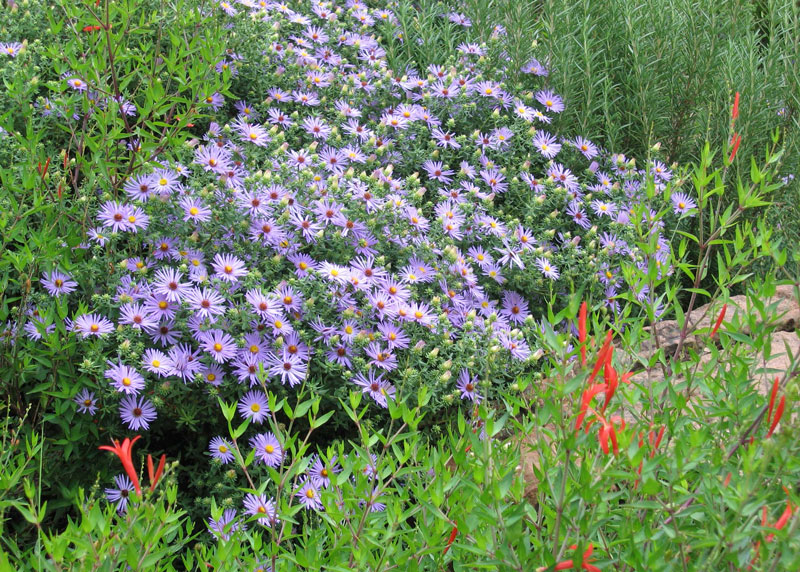Fall for Fall Aster – by Steve Huddleston
During the growing season, fall aster assumes a perfectly mounded shape, grows 2 to 3 ft. tall and 3 ft. wide. It’s easy to miss it. It gives the appearance of a fine-textured shrub because it’s completely green.
Upon closer inspection, however, you’ll see that the tips of the branches are loaded with tiny green floral buds. These buds can open earlier in the season and result in premature bloom if not removed. The solution: in mid-May, cut the stems back by one-third to delay bloom until fall and to induce heavier flowering in the fall. That also serves to keep the plants fuller and more compact.

During October, the entire mound is absolutely covered with daisy-like, lavender flowers about 1 in. in diameter. The flowers’ numerous petals surround golden-yellow centers. These flowers persisting for three to four weeks, make a stunning display in the landscape. They attract butterflies such as Gulf fritillaries, painted ladies, and monarchs. There is no doubt: this is a perennial for a pollinator garden!
What you’ll want to know…
• Scientific name: The most recent Latin name is Symphyotrichum oblongifolium, although a synonymous Latin name, Aster oblongifolius, is still used. Fall aster belongs to the Asteraceae, or aster, family.
• It is winter-hardy to USDA Zones 3 to 8. Cold will not be an issue for this plant.
• Fall aster is native to the Great Plains of the U.S., all the way down to Texas, where it is most frequently found in the calcareous prairies of the Edwards Plateau and lower plains in well-drained sandy, loam, clay, caliche, or limestone soils.

• Fall aster brings an unusual color to the fall garden. Its lavender shades combine well with the oranges and yellows of other flowers typically seen in the fall landscape.
• After blooming has finished or the perennial has gone dormant, cut all the stems back to within 1 in. of the ground, where a rosette of foliage will form and persist through the winter.
• Fall aster spreads by stolons, which means you should divide and transplant the clumps regularly to maintain it.
• This is the perfect pass-along plant because those divided plants can be given away. New starts establish very quickly. Divide it in early spring.
• Once established, fall aster survives on low water use, and the plant holds up well to Texas’ hot summers.
• Fall aster combines especially well with the golden-yellow blooms of Mexican mint marigolds (Tagetes lucida), also with the silver foliage of Artemesia ‘Powis Castle.’
